July 20, 2019
My final stop of the day was a place I had never heard of before coming to Oahu. Yet, it is a place I believe is a must-do when visiting Honolulu. The Punchbowl Cemetery, or properly known as National Memorial Cemetery of the Pacific, is a veteran cemetery located on the northside of Honolulu (north of H1). The cemetery opened in 1949 and holds the remains of veterans and their families dating back from World War II.
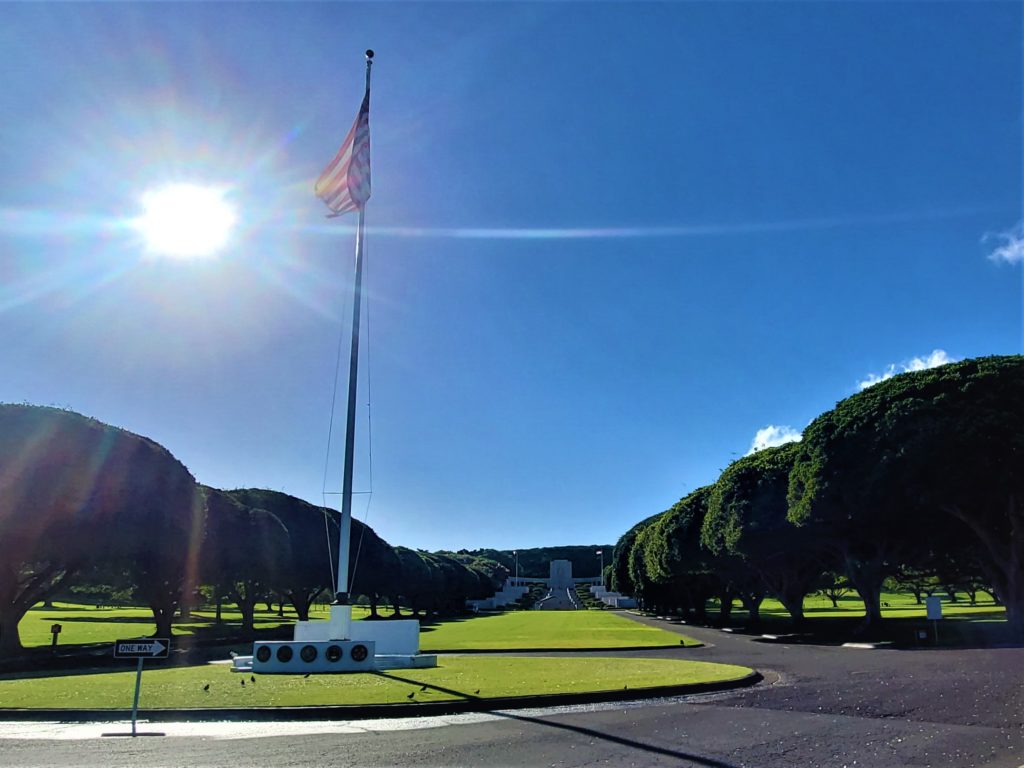
The cemetery is referred to as the Punchbowl because it is located in the crater of an extinct volcano! The dome shape of the cemetery creates a quiet, peaceful environment for our fallen soldiers. The traditional Hawaiian name for the crater is Puowaina, which roughly translates to “Hill of Sacrifice.” The name is so incredibly fitting.
Getting There
The cemetery is best accessed with a car, as it is located at the top of a small mountain. It can be reached by public transport as well, however, the bus stop is at the base of the mountain. From the bus stop there is a steep half-mile climb to the entrance. I was originally going to visit by public transport, but I was fortunate to visit with a vehicle.
Hours of operation for the cemetery are from 8 AM to 6 PM every day. I arrived 45 minutes before closing, which did not give me enough time to fully explore the cemetery. I would recommend allowing at least one and a half hours to visit.
A Beautiful Place to Honor our Veterans
I was not prepared for how stunning and peaceful the cemetery would be. To be honest, I had no expectations at all when visiting. All I knew before was that it was a cemetery inside a volcano crater. That information alone intrigued me to visit, but once I arrived I was floored by its presentation and beauty.
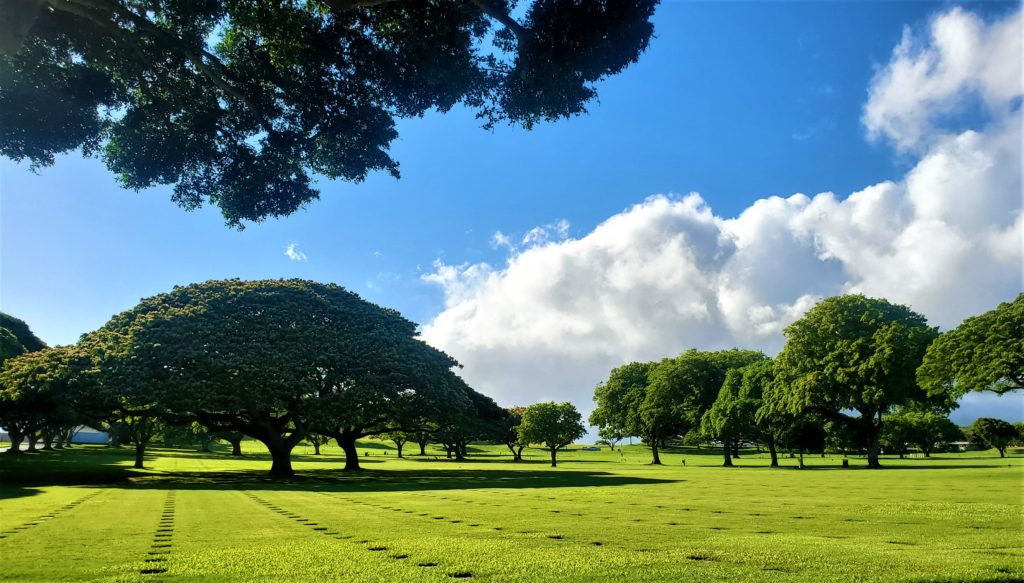
The lawns of the crater are immaculately cared for and the perfectly placed trees offer refuge from the sun when walking through the stones. But when you first arrive, you might wonder “Where are all the tombstones?” At first glance, the cemetery appears to be a well-maintained park. But upon further inspection, you will notice that the headstones are plaques lying flush with the ground. I love this illusion.
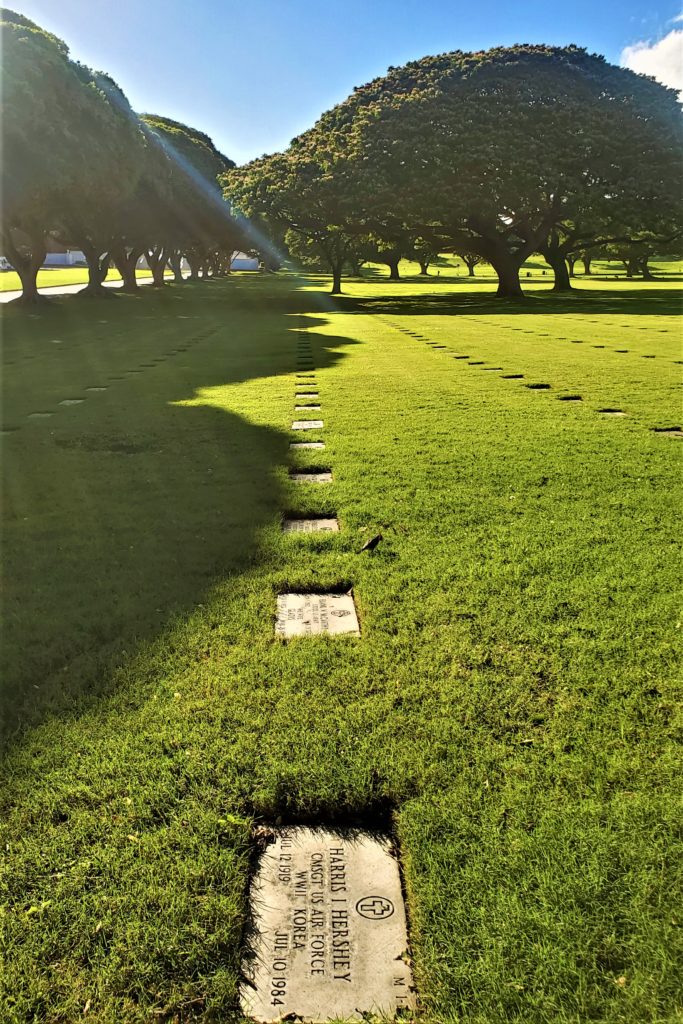
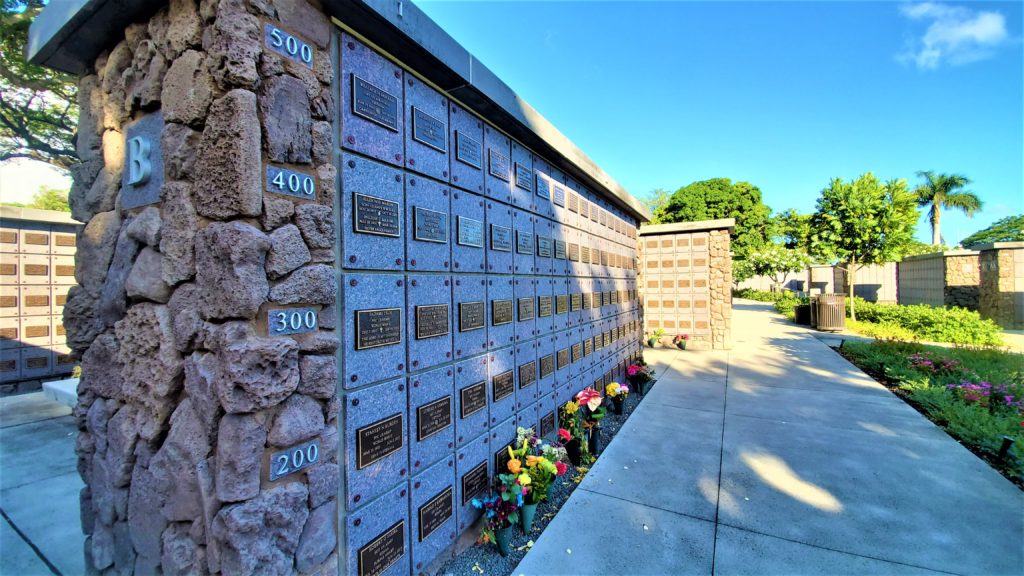
The beauty and atmosphere of the Punchbowl strongly reminded me of the Normandy American Cemetery in France. Both are beautifully cared for and provide an aura of somber respect for those buried there. When visiting the Normandy American Cemetery, the iconic white crosses expressed the sheer mass of fallen veterans. At the Punchbowl, the subtlety of the plaques illuminated the peacefulness of this final resting place for fallen veterans.
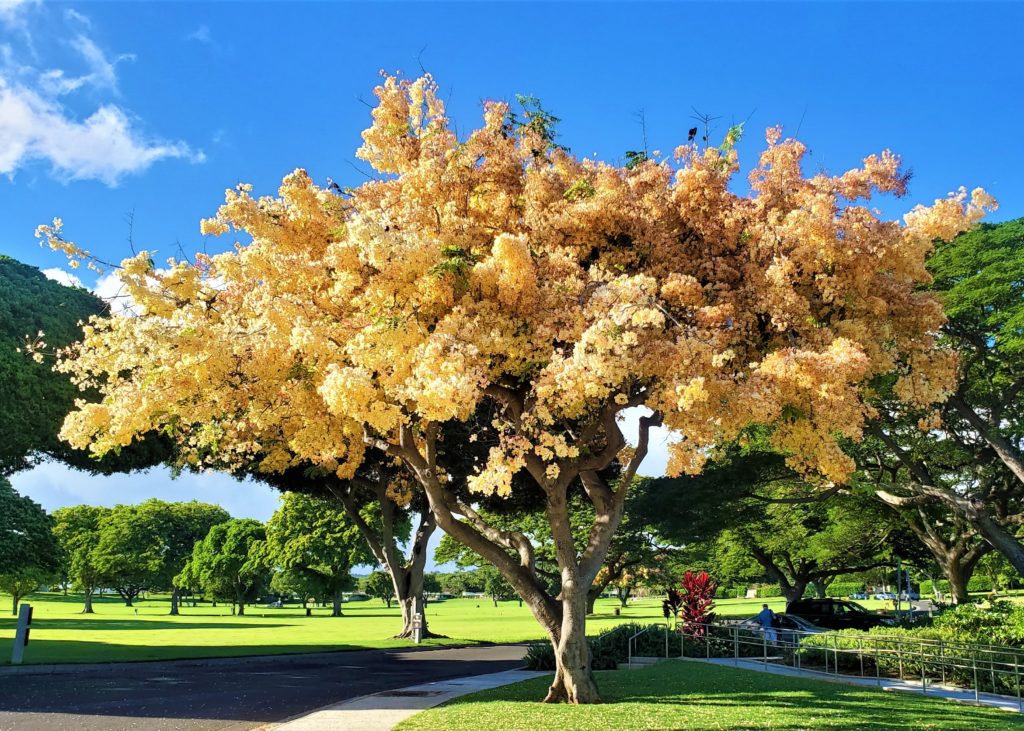
The View
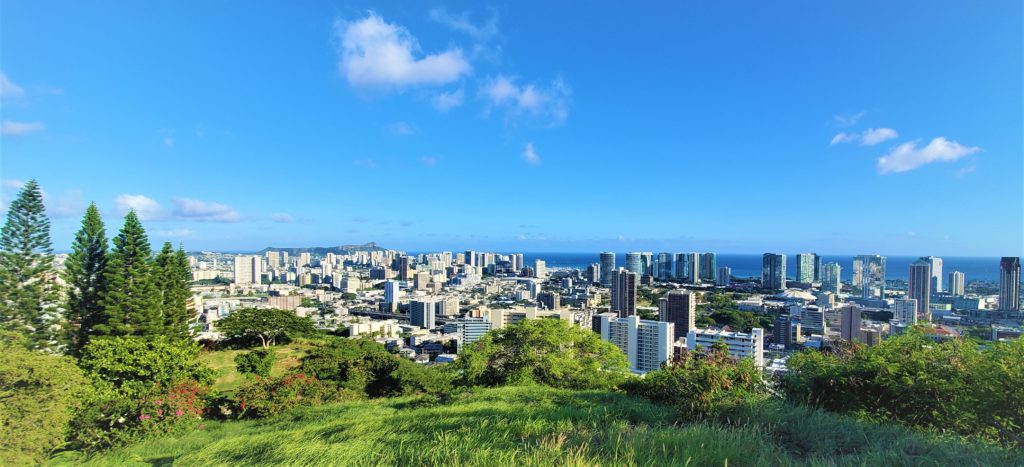
One of the main reasons tourists end of visiting The Punchbowl is for its sweeping views of Waikiki and Honolulu. On the drive up to the cemetery, there is a small pull off that offers amazing views of downtown. However, inside the cemetery on your left as you enter there is a viewpoint that offers the best views. The roads in the cemetery are one way, so you need to drive around to the right first. I recommend parking by the monument and then follow the path by the restrooms up to the viewpoint.
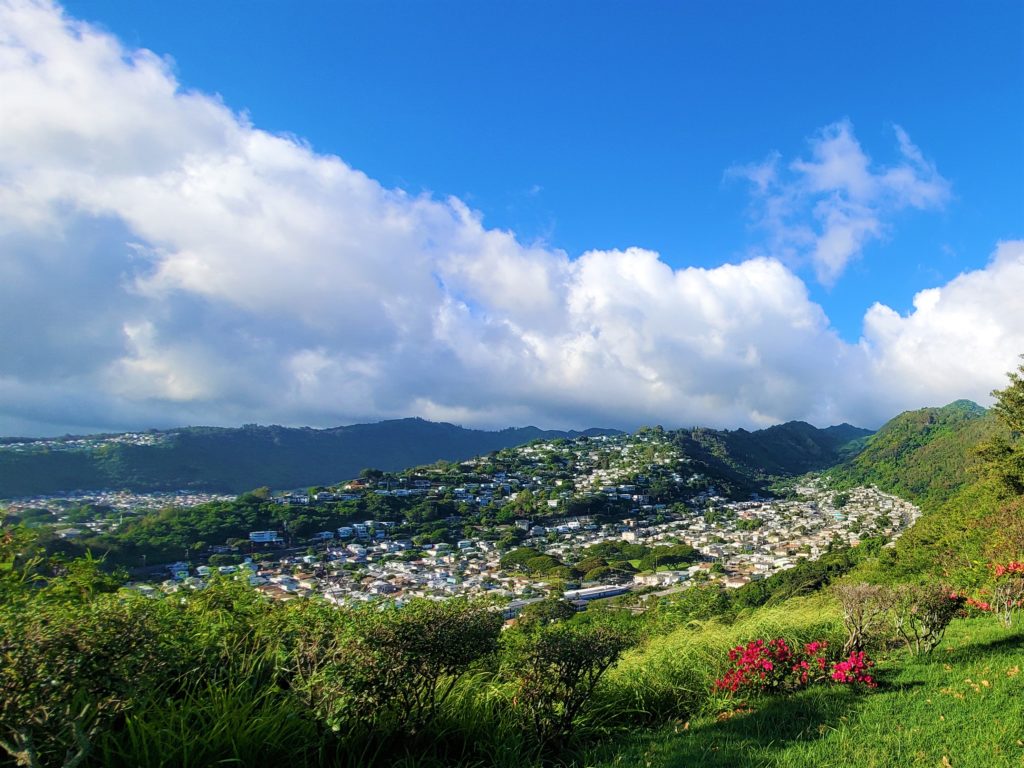
The path follows along the cusp of the crater and is surrounded by memorial plaques from various US leaders. Once at the top the viewpoint is spectacular of both downtown, the ocean, and the whole of the Punchbowl Cemetery. From this elevated point, one can truly see the crater shape of the cemetery and how it got its name of the Punchbowl.
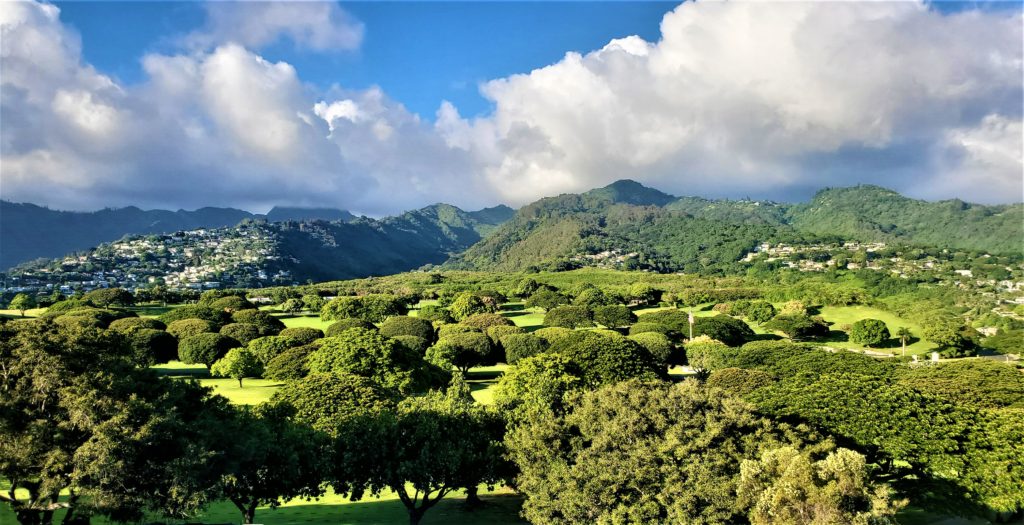
Even though the views are amazing and is one of the main reasons tourists visit, those that do visit are reminded to respect that this is first and foremost a cemetery that honors our fallen heroes and their family members.